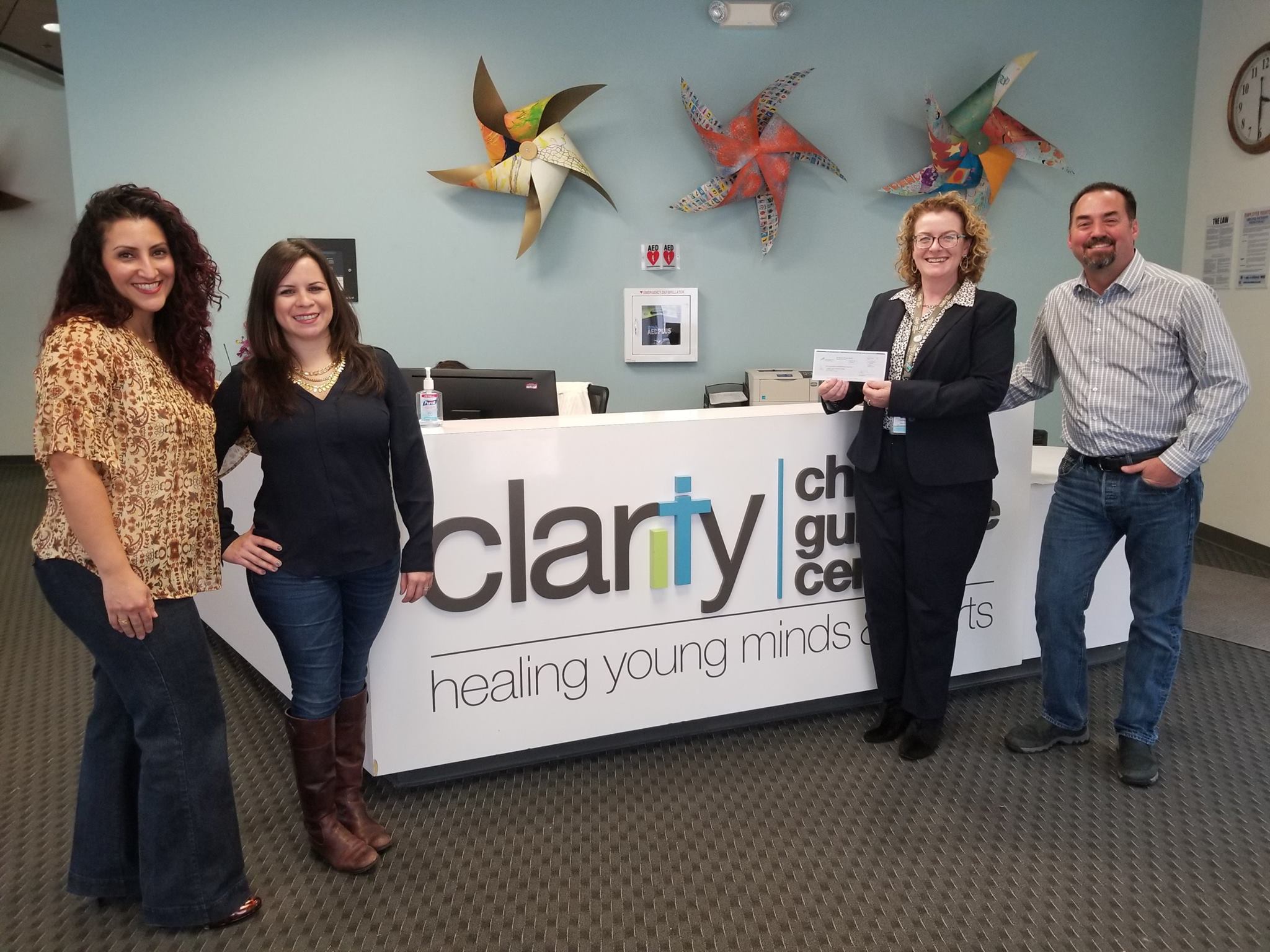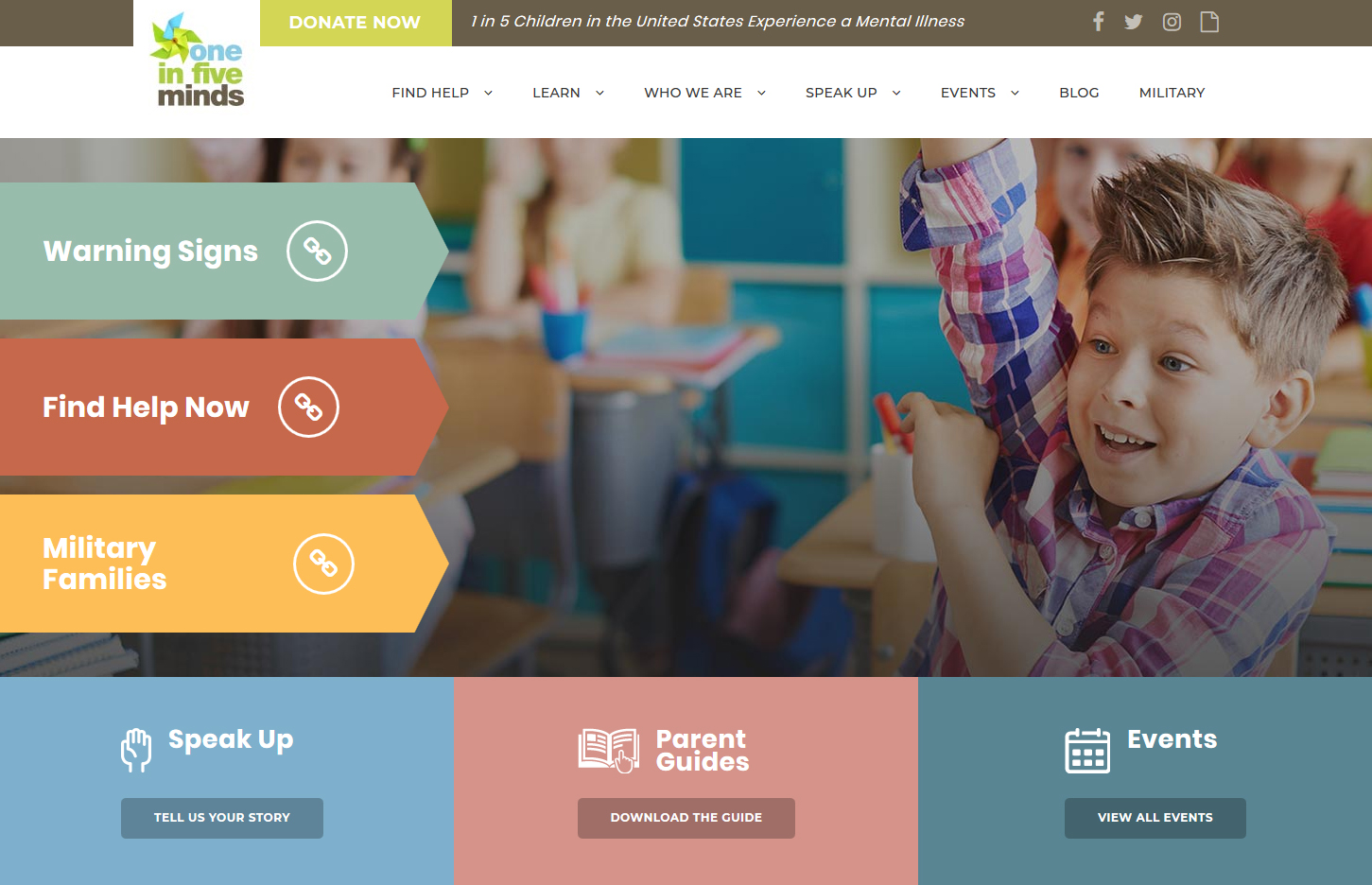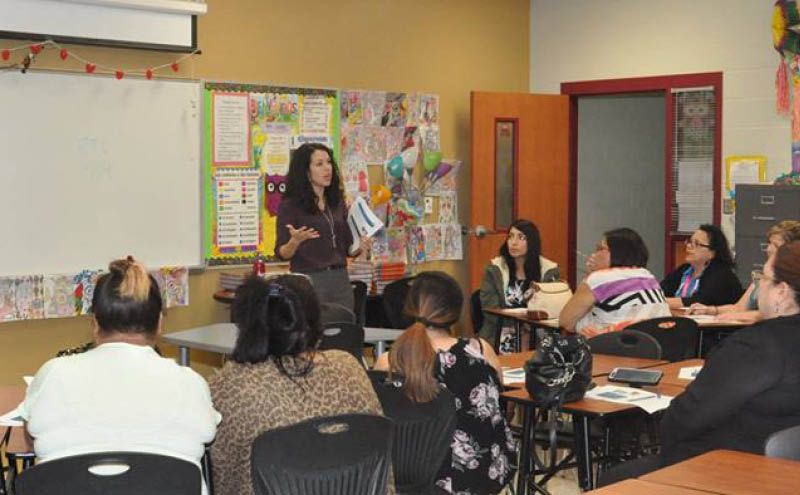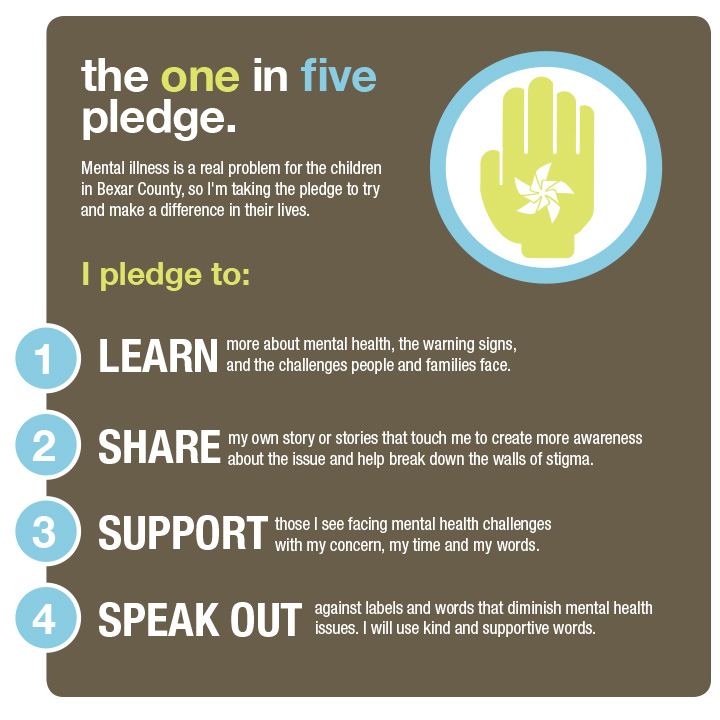Share On Social!
“Will they think I’m crazy? Will they think my child is crazy?”
Parents and kids worry what other people will think if they talk about childhood mental health issues. Negative stigma often keeps them from seeking help.
This isn’t news to Michele Brown, vice president of marketing and development at Clarity Children’s Guidance Center in San Antonio, Texas (63.7% Latino). Brown knows the shocking stats all too well:
- 1 in 5 kids suffer from mental illness.
- Of those, only 1 in 5 receives treatment.
These stats spurred Clarity’s “1 in 5 Minds” campaign to share stories, counter mental health stigma, and boost support, Brown said.
The Problem of Mental Health Stigma
Stigma is when someone, or even you yourself, views a person in a negative way just because they have a mental health condition, according to the National Alliance on Mental Health (NAMI).
Stigma is especially relevant for Latinos.
Latino youth are far more likely than their peers to have mental health issues, which often go unaddressed and untreated. Immigration, cultural identity, poverty, bullying, and other factors affect these disparities, according to a Salud America! research review.
People who don’t get the mental healthcare they need have higher rates of attempted suicide, dropping out of school, abusing substances, etc.

Michele Brown at Clarity wanted to do something to help.
Clarity Children’s Guidance Center is San Antonio’s only nonprofit treatment center for children ages 3-17 who suffer from serious mental health problems. Clarity’s counselors engage people in community education and school resource fairs.
But families need more than just information, Brown said.
They need tools to help them move past the stigma and know what to do and where to go next. They need to know that they are not alone in this.
“In our society, we have a tendency to judge,” Brown told KENS5 in San Antonio. “Parents are afraid that if their child has behavioral issues or a mental illness that it’s going to reflect on their parenting.”
A Campaign to Support Healthy Minds
The Clarity team started to study different mental health campaigns.
They found a missing link: Promote talking about mental health and connect people to available resources.
That led to the “1 in 5 Minds” campaign.
Launched in 2013, the campaign aims to raise awareness about children’s mental illness. It also seeks to break down stigma and increase access to treatment. The goal is that “no one will be afraid to speak about mental illness” and all children “who need treatment will be able to access it.”
 The campaign starts with a website.
The campaign starts with a website.
You can find information on mental health. You can download handbooks to help parents navigate their children’s systems of care. You can even get help for children with military deployed parents.
“The reality is we want to catch kids when they first start exhibiting behaviors that parents or caregivers start to question,” Brown said. “That’s when we want to help.”
But there’s much more than education.
Telling Your Mental Health Story
Clarity’s 1 in 5 Minds website also has a page for sharing your story.
You can also read other stories. Users can “learn, share, and speak up” using resources that show support to family or friends in need.
“Speaking up helps break the stigma of mental health,” according to the website. “Tell your story. Be part of the solution. Help others know that they are not alone.”
A Safe Place to Talk about Childhood Mental Health
Clarity’s 1 in 5 Minds campaign also created a space for people to gather to talk about mental health.
The safe place is a free mini-conference called Strong Minds, Happy Hearts. The event allows parents and school staff to talk about childhood mental health. People can see their peers going through the same issues, and they won’t feel so alone, Brown said.
 This two-and-a-half-hour long program is open to any community member.
This two-and-a-half-hour long program is open to any community member.
Clarity staff provide a light meal and feature speakers who are mental health subject matter experts. They hold the meeting at a local school. Translation services and childcare are offered.
Because Latino families are less likely to access health care services for their mental and emotional needs, providing these services at a familiar location like their child’s school is helpful.
“We want to reach the kids now so that they can grow up to be resilient adults,” said Stephanie Peterson, Clarity counselor.
At a recent Strong Minds, Happy Hearts meeting, Peterson led a break-out session about cyber-bullying. Other topics covered how parents can work with schools to help children.
“When you have children or a child with mental illness, you feel like nobody understands…you go home to your house, and you tell everybody that everything is okay, and you lie. You’re ashamed because you think nobody else can be going through this. But the truth is there are so many families that go through this every day,” expressed a mother on 1 in 5 Minds website. “Once they educate themselves and see other moms and dads are dealing with it, it’s so helpful.”
Mental Health Awareness Month
The 1 in 5 Minds campaign also hosts events every May for National Mental Health Awareness Month.
One of the most colorful events is the month-long Maynicures movement.
You can sign up for Maynicures online. All you do is paint one finger on each hand one color and the remaining four a different color. This represents the 1 in 5 ratio of children with mental illness.
Organizers hope these fun manicures start mental health conversations among friends and family.
The 1 in 5 Pledge
 The 1 in 5 campaign also urges you to take a pledge to learn, share, support, and speak out for mental health.
The 1 in 5 campaign also urges you to take a pledge to learn, share, support, and speak out for mental health.
Clarity hopes others start their own anti-stigma campaign, using these tips:
- Provide resources!
- Use first-person stories
- Digital presence is important
- Partner with school districts
- Collaborate with community partners
- Offer bilingual resources
“Improving access to mental health care is something that everyone can contribute to in simple ways, such as talking about it openly,” said Fred Hines, Clarity president and CEO.
Take the 1 in 5 pledge today to change the future of children’s mental health!
You can also sign up for the new Salud America! “Trauma Sensitive School Action Pack.” It is a free guide with coaching to help school personnel craft a system support traumatized students!
Explore More:
Healthy Families & SchoolsBy The Numbers
142
Percent
Expected rise in Latino cancer cases in coming years



